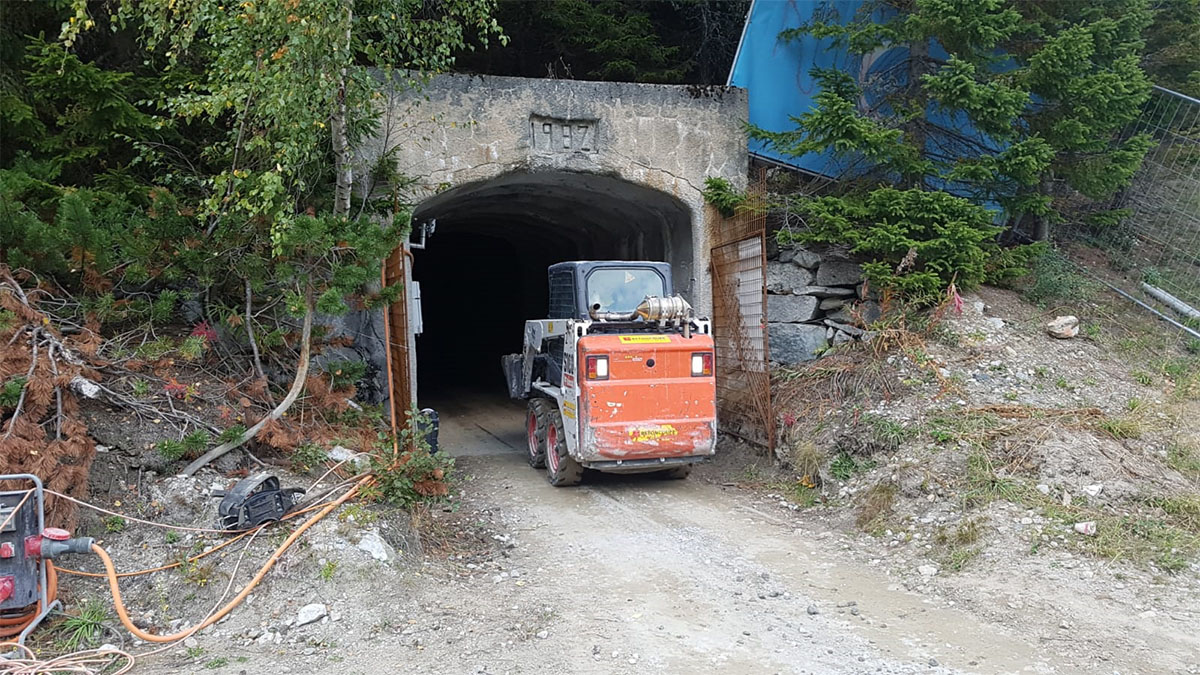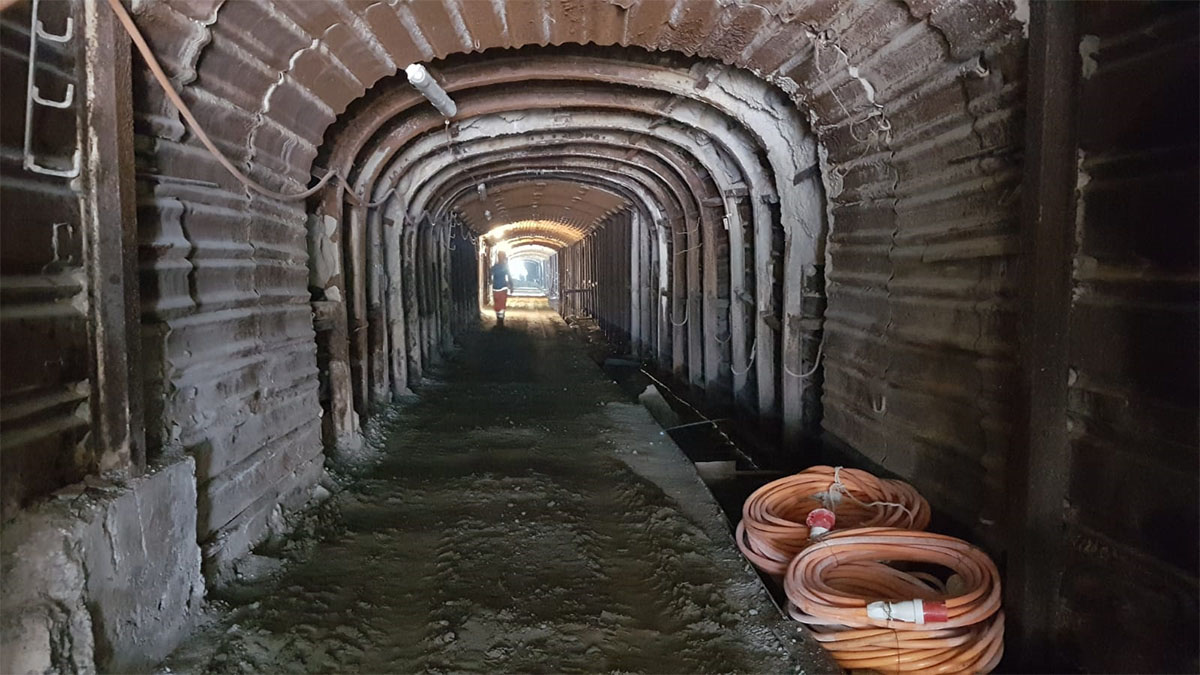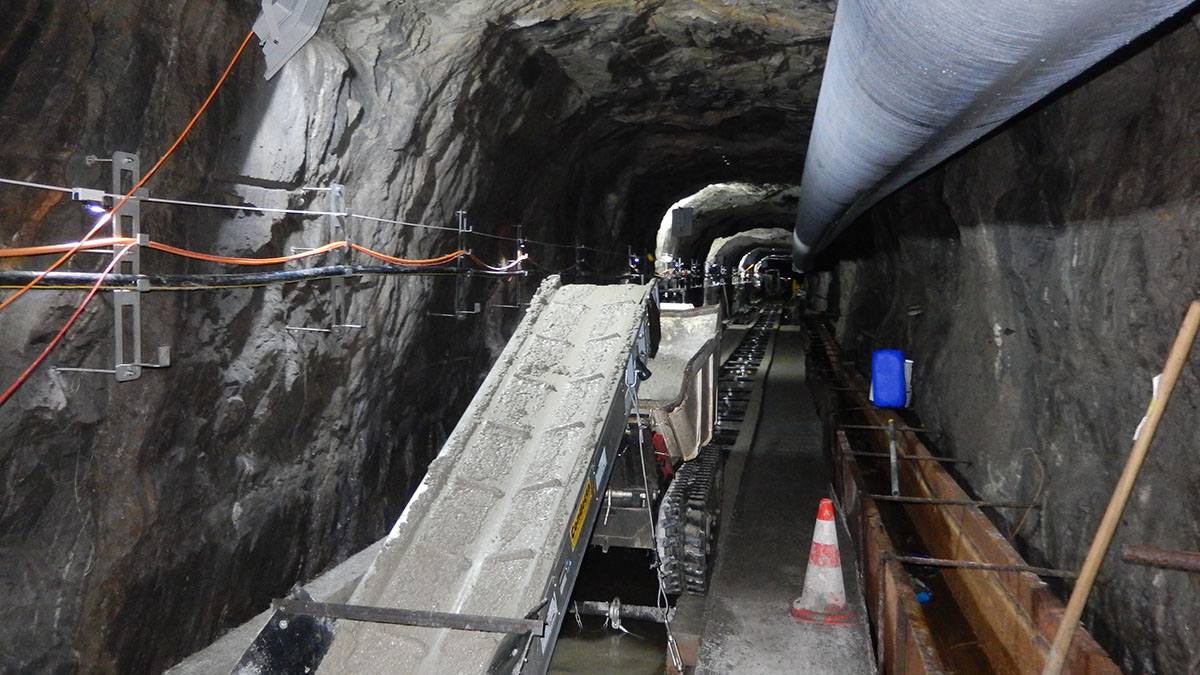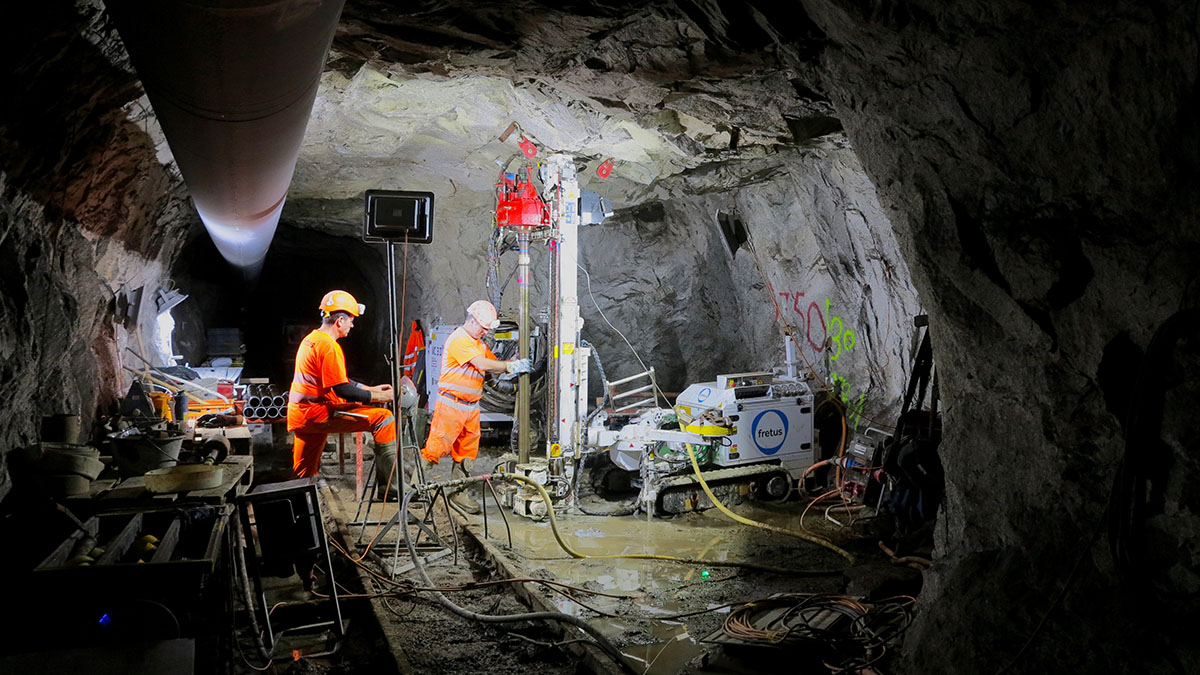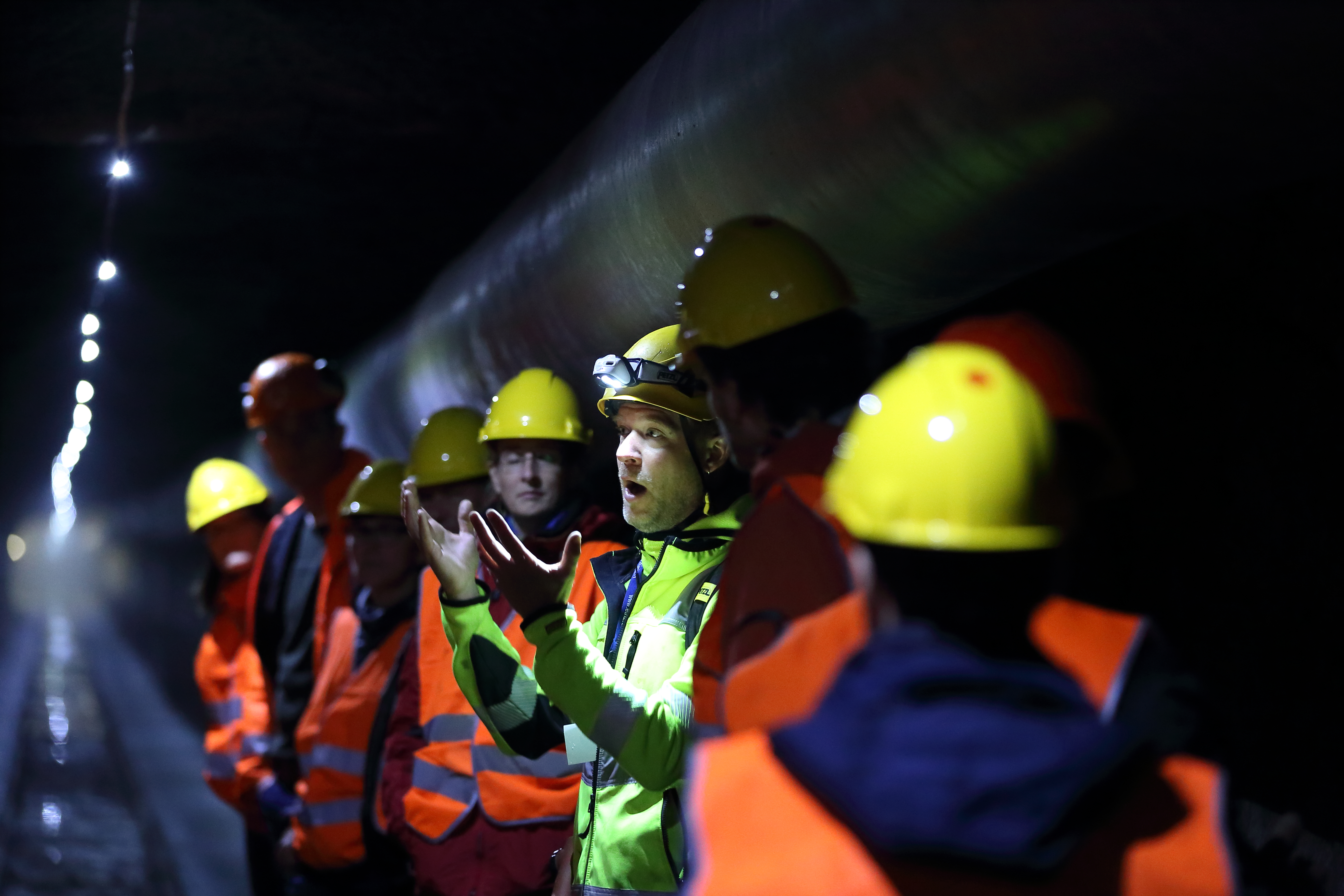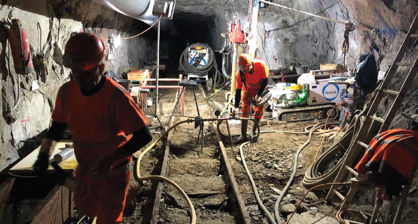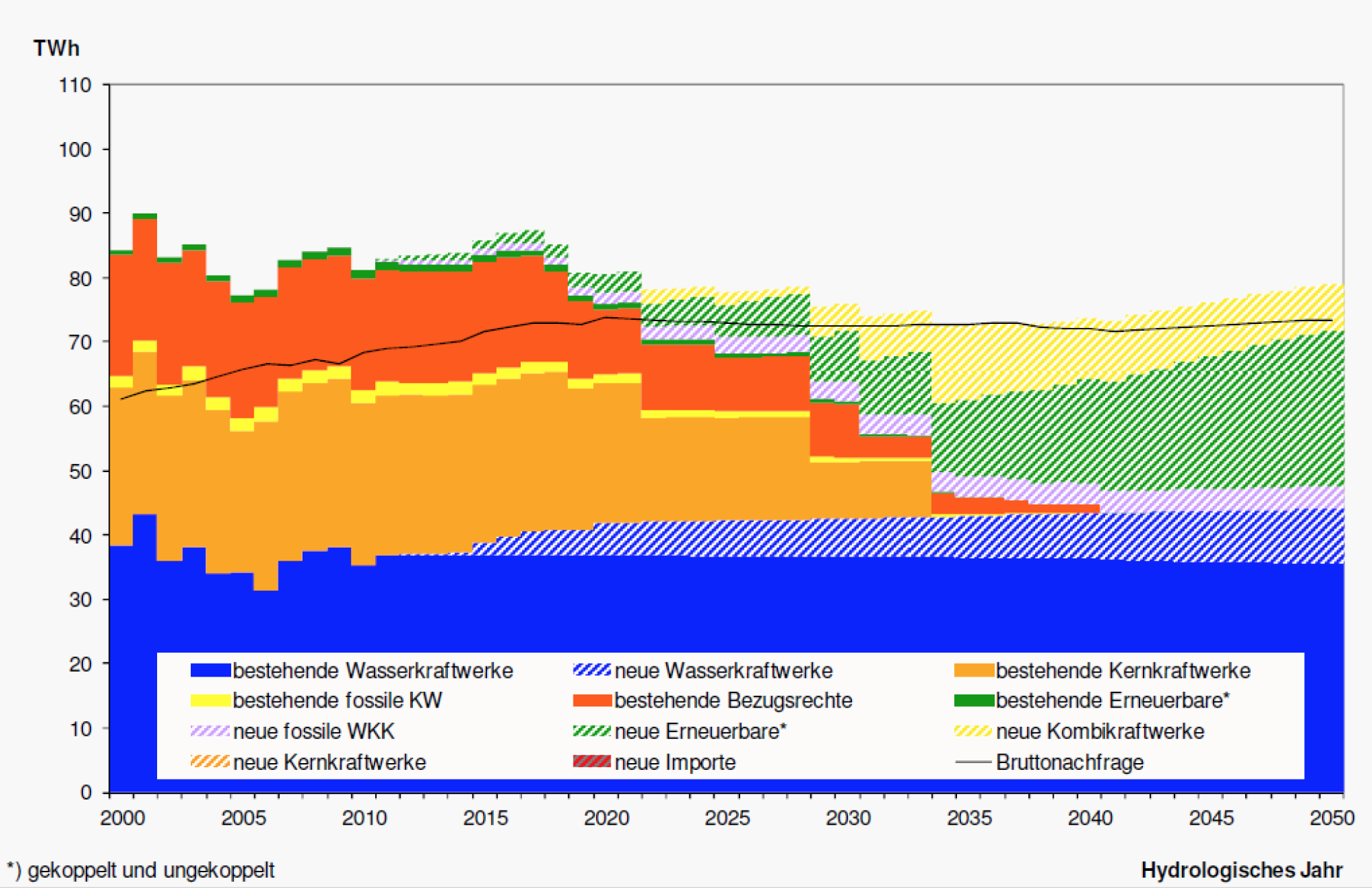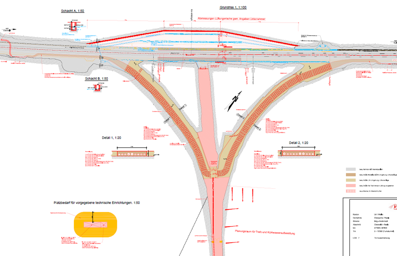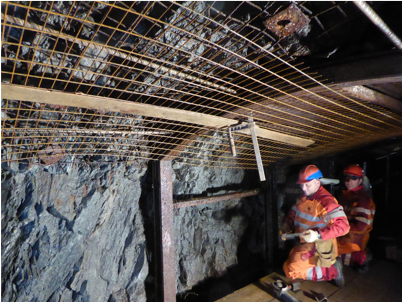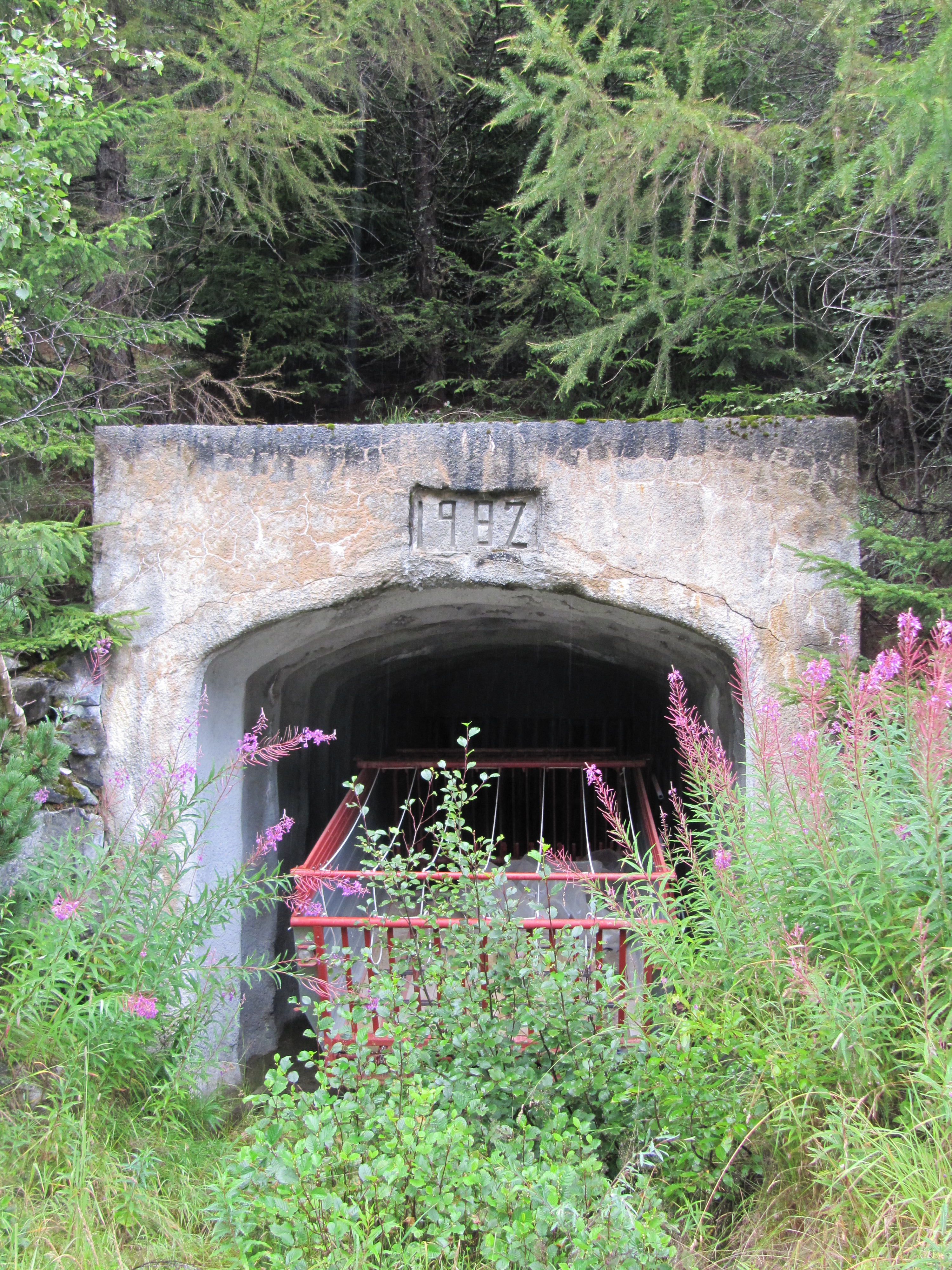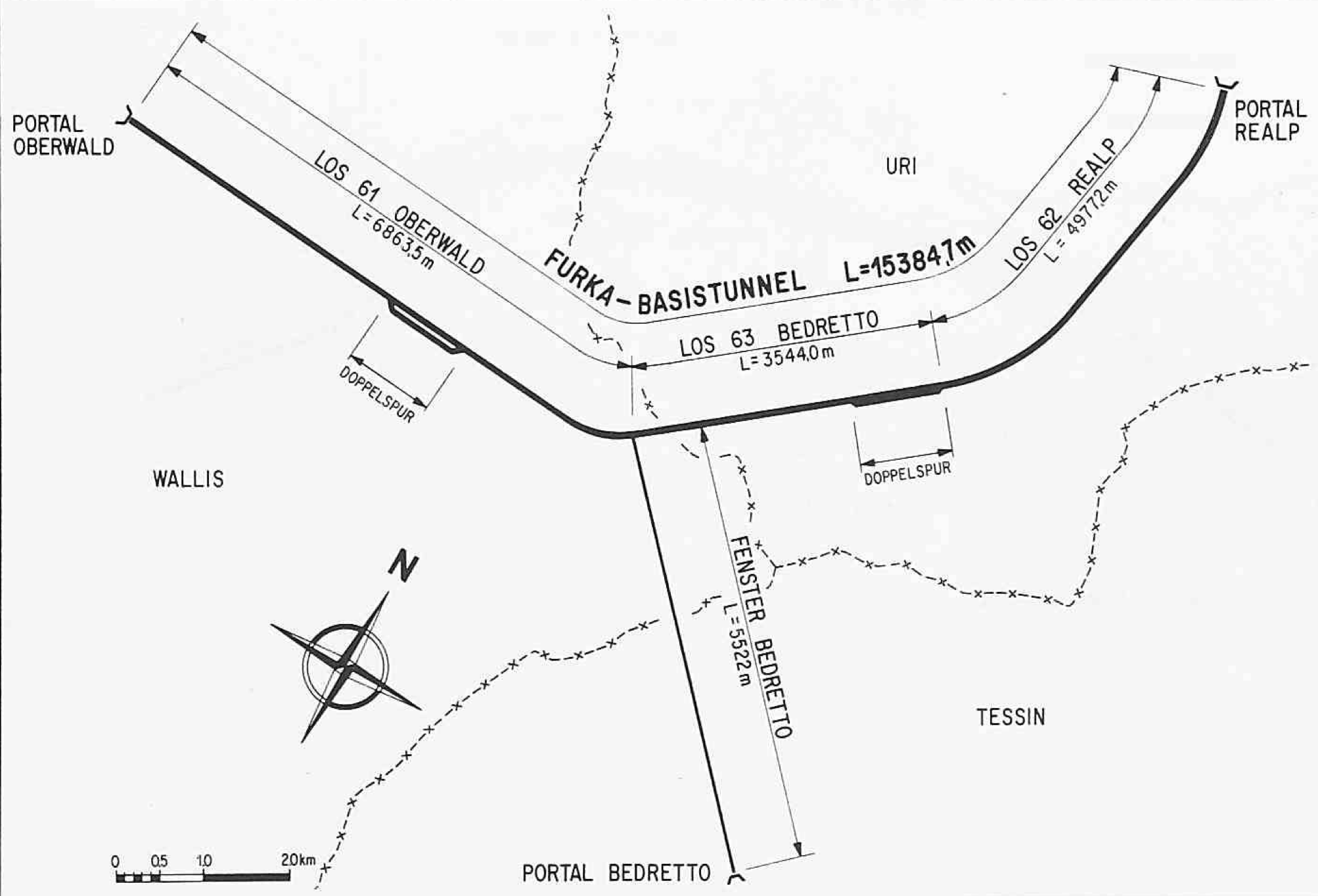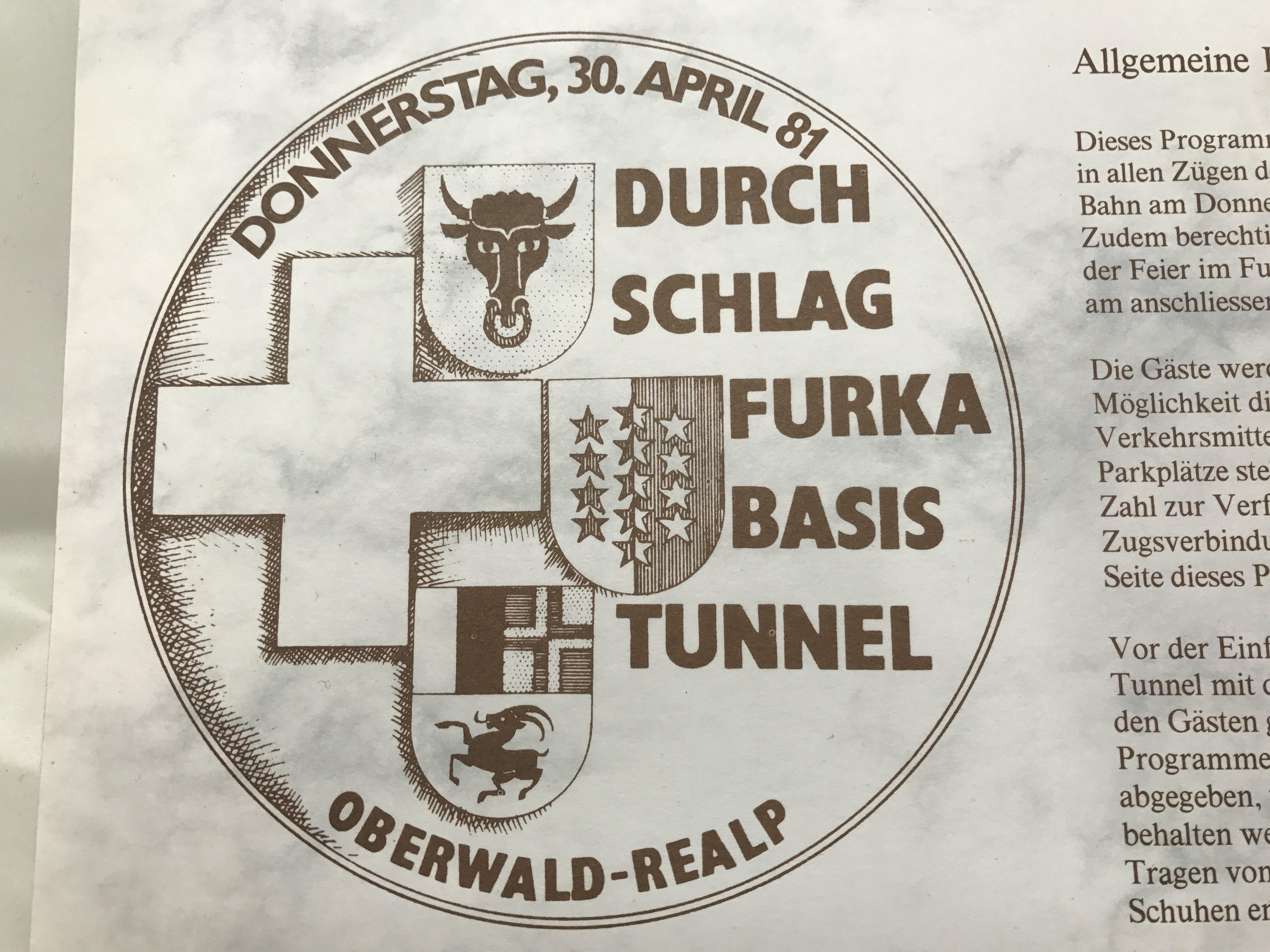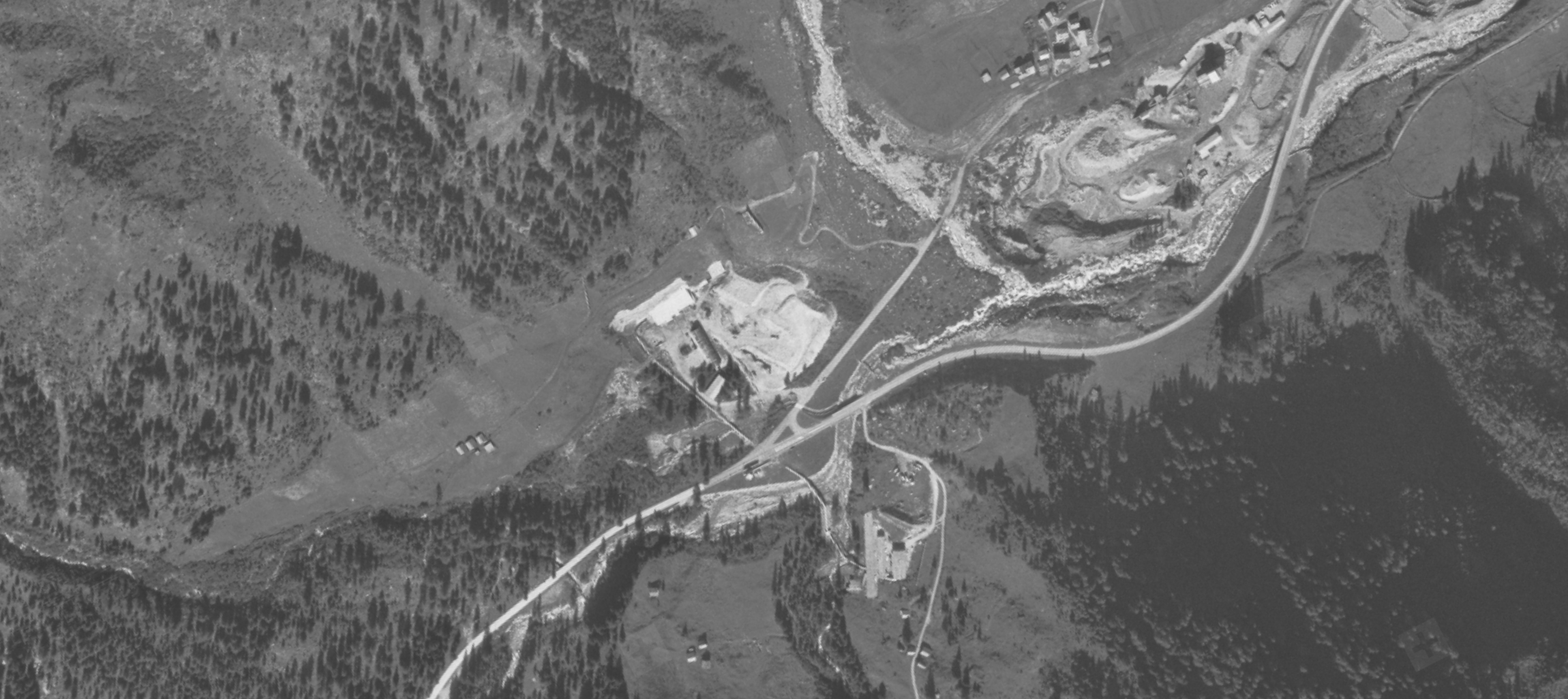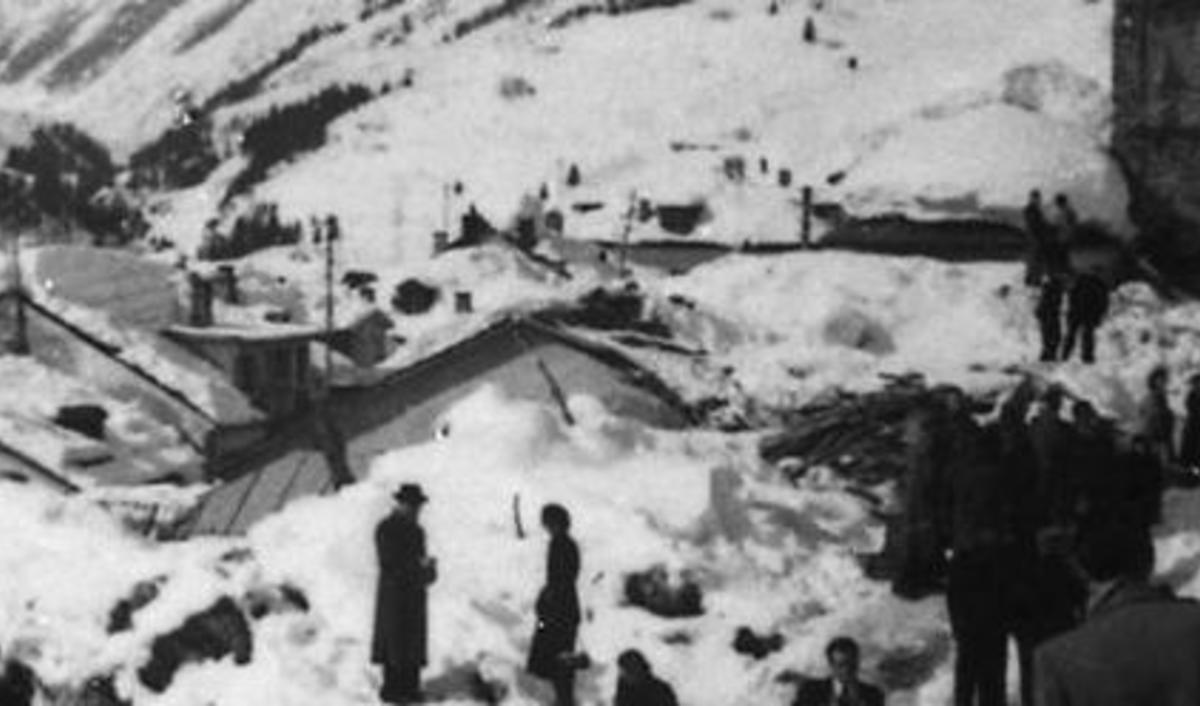History of the tunnel
In the early 70ties, the only way to travel from the Canton of Valais to Uri lead over the mountains. In wintertime, this was not an option either. In 1971, the federal council opened the passage politically by making the funds available to construct the Furka Railway Base tunnel connecting Oberwald (VS) with Realp (UR). As part of the construction of the Furka Tunnel (between 1971 and 1982) an annex tunnel was excavated: The Bedretto tunnel. It was used to remove excavating material and as a supply channel. After finalizing the Furka tunnel, the Bedretto tunnel was abandoned and neither used for rescue nor for maintenance purposes.
The Bedretto tunnel was excavated conventionally by drill and blast. The rock coverage, reaching from the tunnel until the surface, varies between 1,000 m and 1,500 m. The total length of the tunnel is 5,220 m with a width and height of 2.70 m. Therefore, the tunnel is rather narrow and has a horse shoe profile. The tunnel is a bare rock tunnel and was only consolidated in increased deformation zones with steel sets and wood lagging. However, these enforcements could not prevent the tunnel from collapsing at three sections, preventing any passage. In combination, these circumstances explain the abandonment of the tunnel.
Only in 2015, the tunnel was made accessible again. To this aim, all the debris was removed and critical parts anew secured. The reason was the installation of a new ventilation system at the Furka tunnel. In case of a major fire, fresh air is supplied in case of fire events which gave the Bedretto tunnel a new purpose: Providing fresh air from Ticino for the large new ventilation installations installed in small annex tunnels.
The Swiss Energy Strategy aims for 7% geothermal energy by 2050. With this objective in mind the Matterhorn Gotthard Bahn made the tunnel available to ETH to develop an underground laboratory.
The “Bedretto Underground Laboratory for Geosciences and Geoenergies” is under development since 2017 and is located about 2km from the south entrance. It is located in a 100 m long niche, initially a cross-junction for the tunnel railway. The “Bedretto Underground Laboratory for Geosciences and Geoenergies” is specifically developed to host large scale geothermal experimentation in conditions close to reality.

